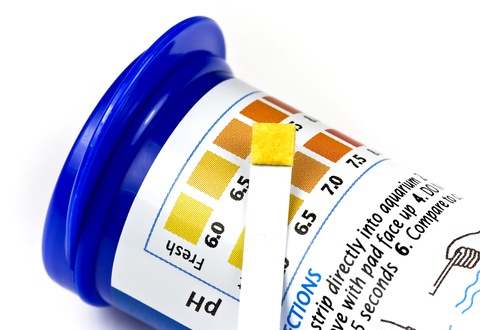Table of Contents
Most aquarists will happily debate water quality to the point of being obsessive. Water is, after all, the atmosphere on which your pets depend.
It isn’t necessary to have a degree in chemistry to maintain a healthy aquarium, but you will need to do some water testing.
Axolotls are extremely sensitive to water quality. You must be prepared to test the water in your tank on a weekly basis to ensure your pet’s continued good health.
With that in mind, there are some basic measurements you need to at least understand to some degree.
Acidity or Per Hydrogen (pH)
The “pH” sign for most people signals an assessment of acidity. When viewed as a scale, low numbers mean greater acidity and higher numbers indicate “basic” or alkaline water.
The actual measurement is the balance in the water between hydrogen (H+) and hydroxide (OH) ions. Axolotls are freshwater creatures, so they need a pH range of 6.5 to 7.5.
Carbonate Hardness (KH)
With this measurement, it’s easy to confuse terms. KH refers to alkalinity, which is not the same thing as “alkaline.”
Alkalinity is a description of the water’s ability to neutralize and absorb acid, thereby acting as a “buffer.” If the KH level in water is high, there won’t be many changes in the pH level, and the water will be more stable.
Specific Gravity (sg)
In its most simple terms, specific gravity measures the salinity. It is taken with a hydrometer or a refractometer. Since axolotl are freshwater creatures, the specific gravity of their should be around 1.0000.
Hard vs. Soft Water
Axolotls prefer slightly hard. If you have limescale in your cookware or around your pipes, you have hard.
If your axolotl is living in that is too soft, its color will fade, especially the shade of the gills. This indicates your pet is suffering from temporary anemia. You will need to add salts to the to increase the hardness.
Since these equations can be confusing, it’s best to find out in advance if the in your area is hard or soft and consult with an experienced aquarist about the best corrective measures to test.
The variance in quality in this regard can be so extensive, there is no one set formula to “fix” the measurement. In general, however, soft tends to be more acidic and hard is more alkaline in terms of pH.


 Author and long-time animal lover. Sharing knowledge on pet care through experience and the written word.
Author and long-time animal lover. Sharing knowledge on pet care through experience and the written word.